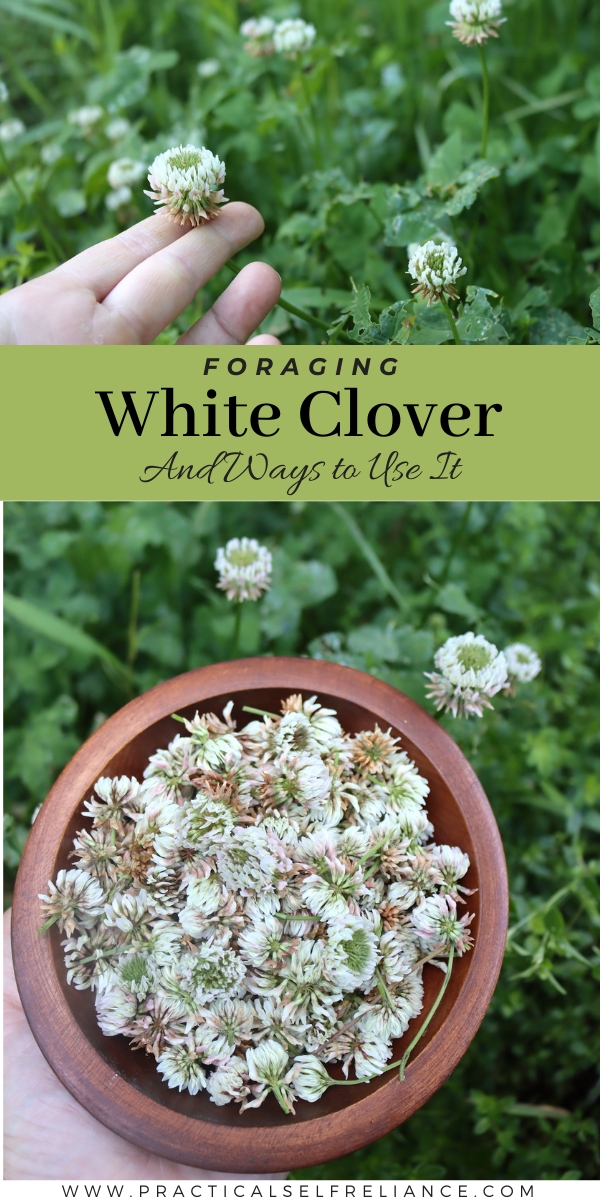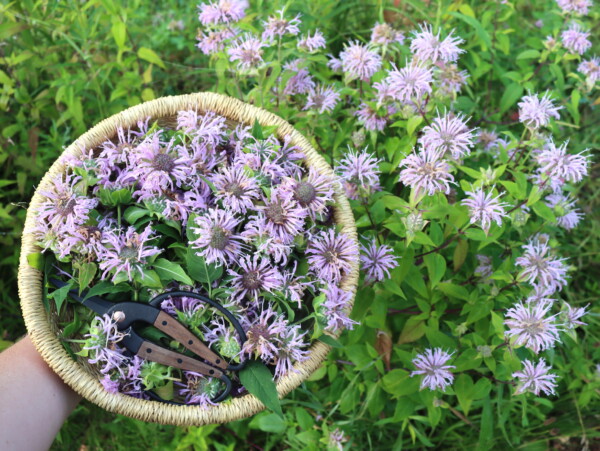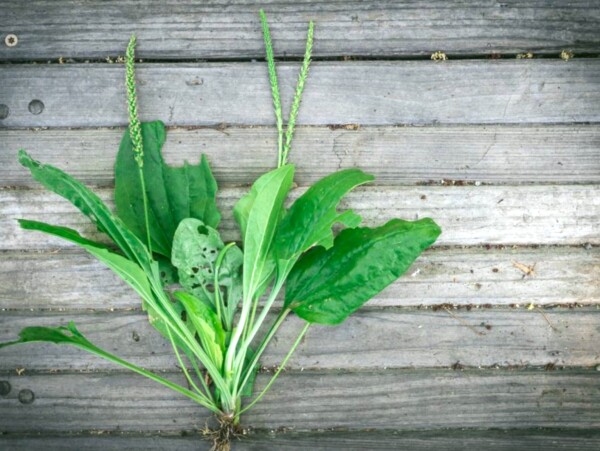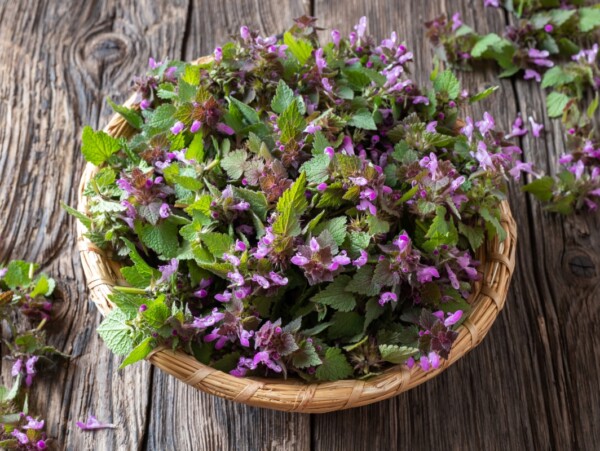Affiliate disclosure: This post may contain affiliate links. Please see our Privacy Policy.
White Clover (Trifolium repens) is a low-growing perennial groundcover that’s common in lawns. Bees love these prolific flowers, and the whole plant happens to be edible and medicinal.
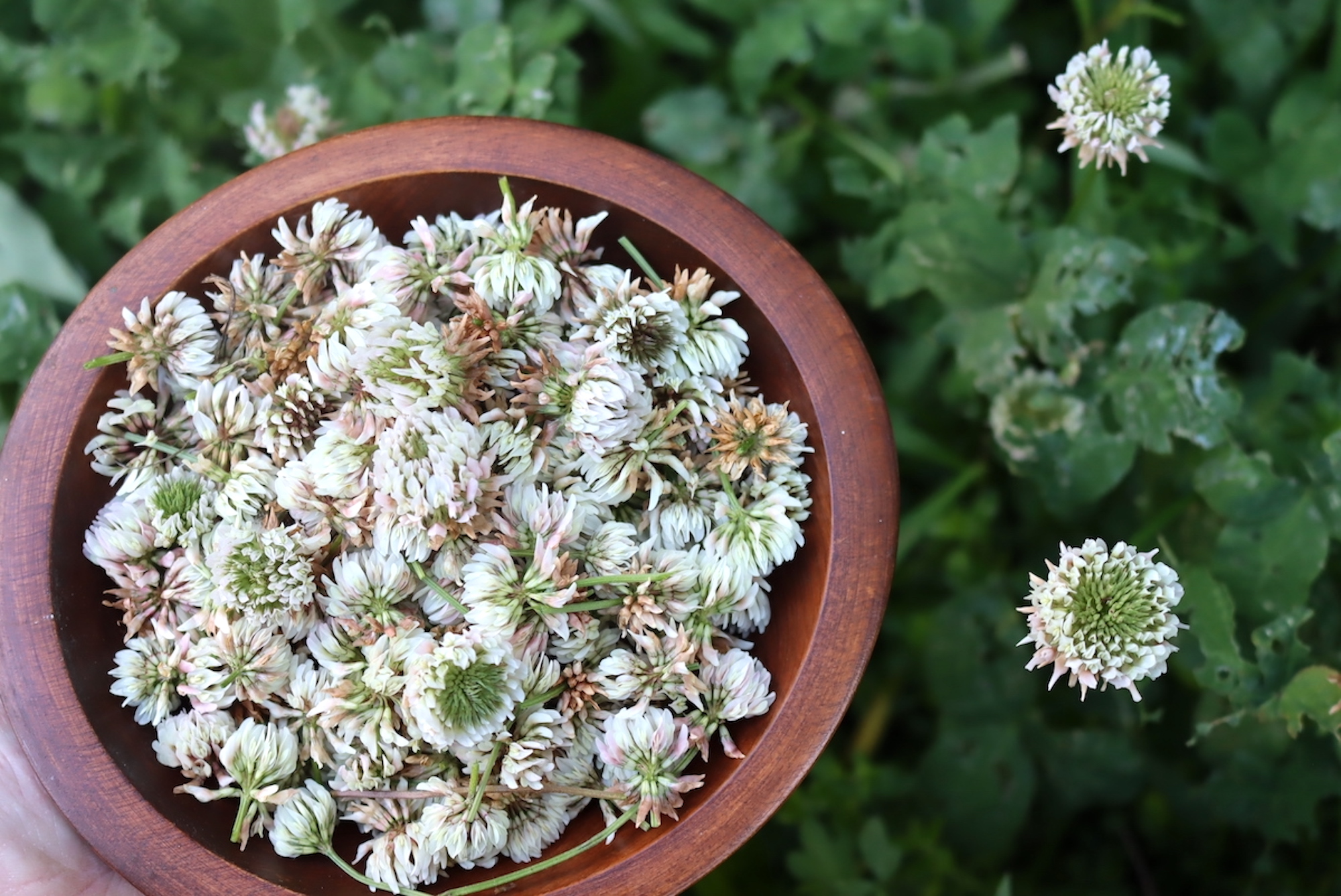
Table of Contents
Lawn care companies call white clover a weed, but what’s a weed but a plant whose virtues you’ve yet to discover?
White clover happens to be both edible and medicinal, and it’s a valuable food source for the bees too. It fixes nitrogen, so it can tolerate poor soils (so it thrives without lawn fertilizer), and it tolerates traffic too.
It makes you wonder if grass isn’t the weed invading the clover patch? It seems like clover could get the job done much better, with less effort, and be prettier at the same time. (Not to mention, of course, tastier.)
What is White Clover?
White Clover (Trifolium repens) is a perennial, herbaceous plant in the legume or Fabaceae family. You may also hear this plant called Dutch Clover, Dutch White Clover, Ladino, Ladino Clover, Trefoil, or White Trefoil.
White Clover is native to Europe and Central Asia but has been introduced worldwide. It’s now common in New Zealand, Australia, and North America. White Clover is often used as a pasture or cover crop, and several cultivars are available today.
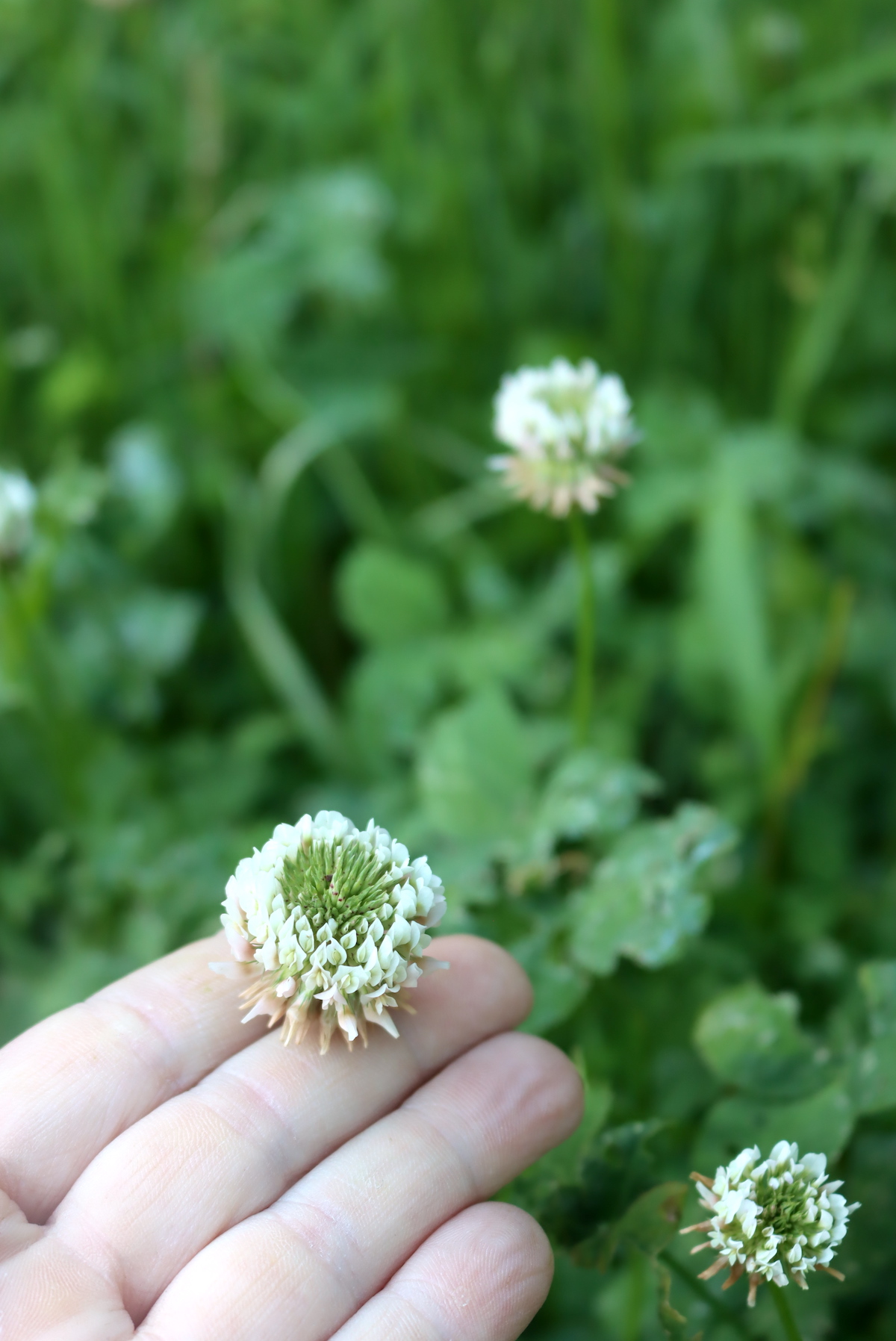
Is White Clover Edible?
White Clover is edible; you can eat the stems, leaves, flowers, and seeds. White Clover is safe to eat raw or cooked, though some sources indicate it’s more easily digested by humans when cooked.
Herbalists often use White Clover in traditional medicinal practices. You may use White Clover internally or externally in your medicinal practice.
Some sources report that White Clover has a blood-thinning effect, especially when consumed in large quantities. Avoid White Clover if you’re taking blood thinners or hypertension medication or are scheduled for surgery.
Additionally, White Clover may have mild estrogenic effects similar to Red Clover. If you’re pregnant or breastfeeding, consult your physician before supplementing with White Clover.
White Clover is also excellent forage for livestock.
White Clover sometimes grows in urban settings, including lawns, parks, and roadsides. You should avoid harvesting White Clover from any area that could be contaminated with herbicides, pesticides, or other chemicals.
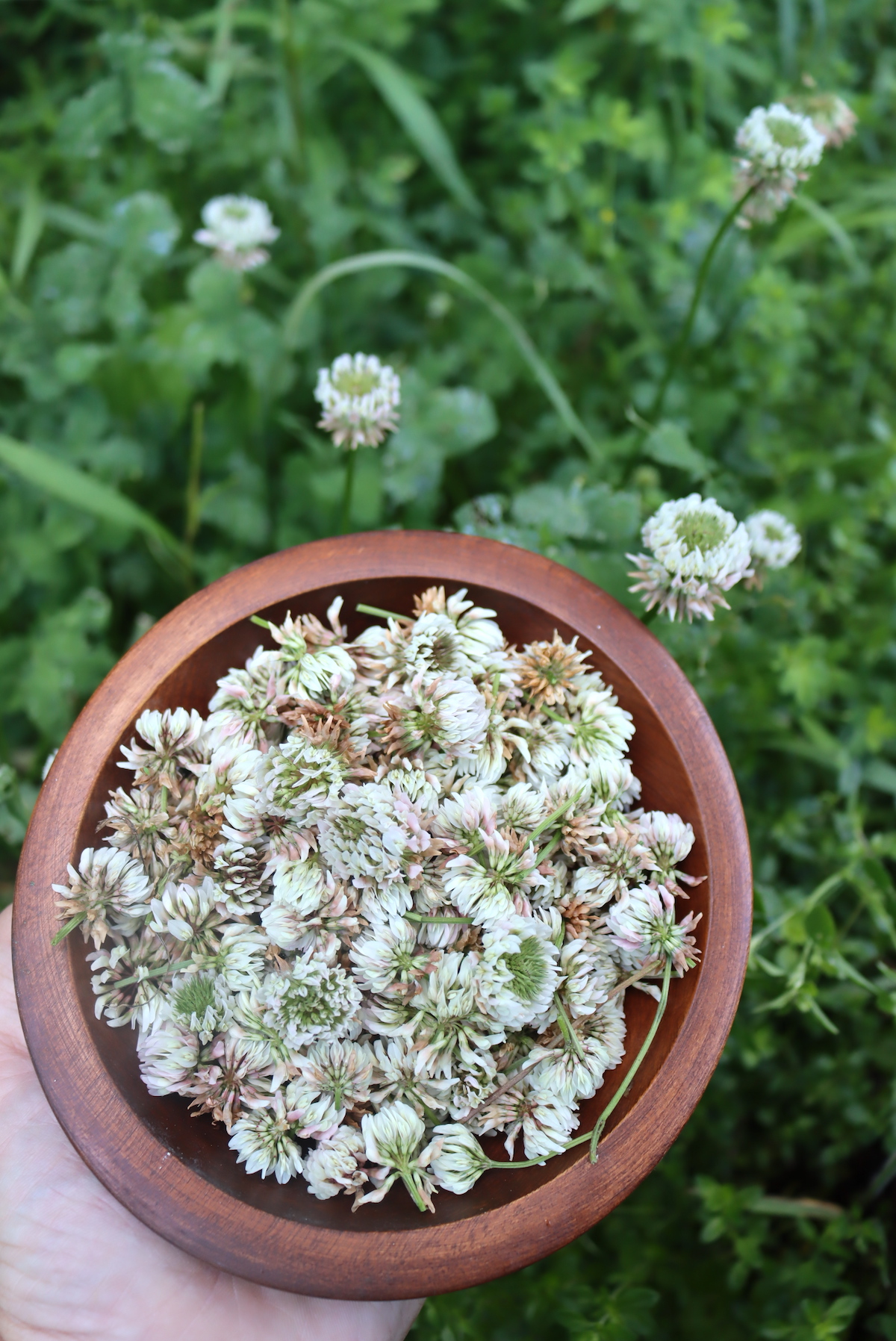
White Clover Medicinal Benefits
White Clover contains several essential vitamins and minerals, including vitamins A, B2, B3, C, and E, as well as magnesium, potassium, chromium, and calcium. Due to this, Herbalists sometimes use White Clover in tea blends and other medicinal mixes to help boost the immune system or to treat colds, flu, fevers, headaches, and congestion.
In addition to White Clover’s immune system benefits, one study has found that it’s a rich source of flavonoids. The study found that White Clover’s flavonoids display anti-lipase activity and can inhibit key enzymes involved in carbohydrate digestion. These findings indicate that White Clover may help treat obesity and prevent type two diabetes.
Further, in 2020, researchers compiled a review of studies focusing on White Clover’s properties. They found studies that indicated White Clover is rich in important flavonoids, isoflavones, phenolic acids, glycosides, monosaccharides, proteins, essential fatty acids, tocopherols, and carotenoids. The studies also indicated that White Clover may have anti-inflammatory, antiseptic, analgesic, antioxidant, antirheumatic ache, and antimicrobial properties. While further studies are needed, these findings suggest that White Clover is an important nutritional and medicinal plant.
Herbalists from the Naga tribes of India also use White Clover to kill intestinal worms. A 2008 study tested this use and found that White Clover does indeed have significant anti-tapeworm properties.
While these uses haven’t been widely studied, herbalists also use White Clover flower teas or tinctures to treat gout, rheumatism, diarrhea, and cancer prevention. White Clover is also mildly estrogenic, like Red Clover. Though it isn’t typically used this way, White Clover may also help treat menstrual and menopause symptoms as Red Clover does.
Herbalists may also employ White Clover externally as an eyewash to treat minor infections or as a poultice or salve for treating minor skin irritations, wounds, sores, ulcers, and burns. Some herbalists also use White Clover in herbal smoking blends as a tobacco substitute.
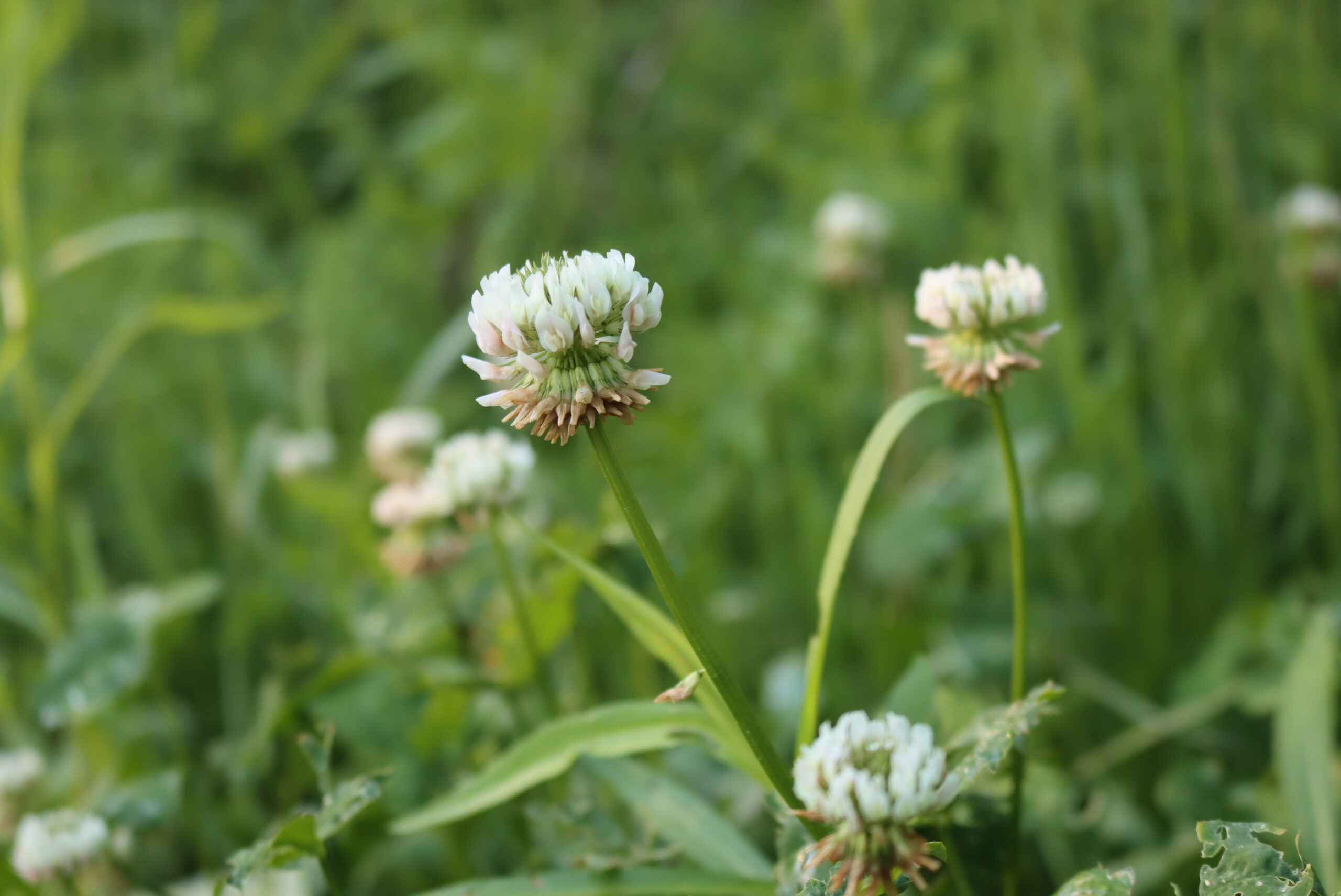
Where to Find White Clover
White Clover is native to Europe and Central Asia but has been introduced worldwide as a pasture crop for livestock or a garden cover crop. Today, you can find White Clover growing in all parts of the temperate world, including Australia, New Zealand, and North America.
White Clover grows in open, sunny, grassy areas like lawns, pastures, roadsides, and gardens. It thrives in cool, moist climates and grows best in silty or clay soils that have ample moisture or irrigation. It will also grow in sandy soils with a high water table or those that are fertilized and irrigated. White Clover also grows best in areas with a pH between 6 and 7.
When to Find White Clover
White Clover is a hardy perennial that can be found year-round in many climates. In most northern areas, White Clover will survive beneath the snow, which acts as insulation. However, it may be less winter-hardy in regions that experience extremely cold temperatures without snow cover.
White Clover begins to put on new growth in early spring as soon as the temperatures start to warm. It flowers in late spring through the summer, and in many areas, you may spot blooms anytime between May and October.
Identifying White Clover
White Clover is a low-growing herb, reaching only 8 to 10 inches tall. It may blend in with your lawn or pasture when not in flower until you look closely for its trifoliate leaves, each composed of three rounded leaflets. In bloom, you may easily spot its spherical white blossoms.
You’ll frequently see it growing in patches made up solely of White Clover. It spreads both by seeds and through its stems which act as stolons, creeping along the ground and rooting at the nodes to form mats.
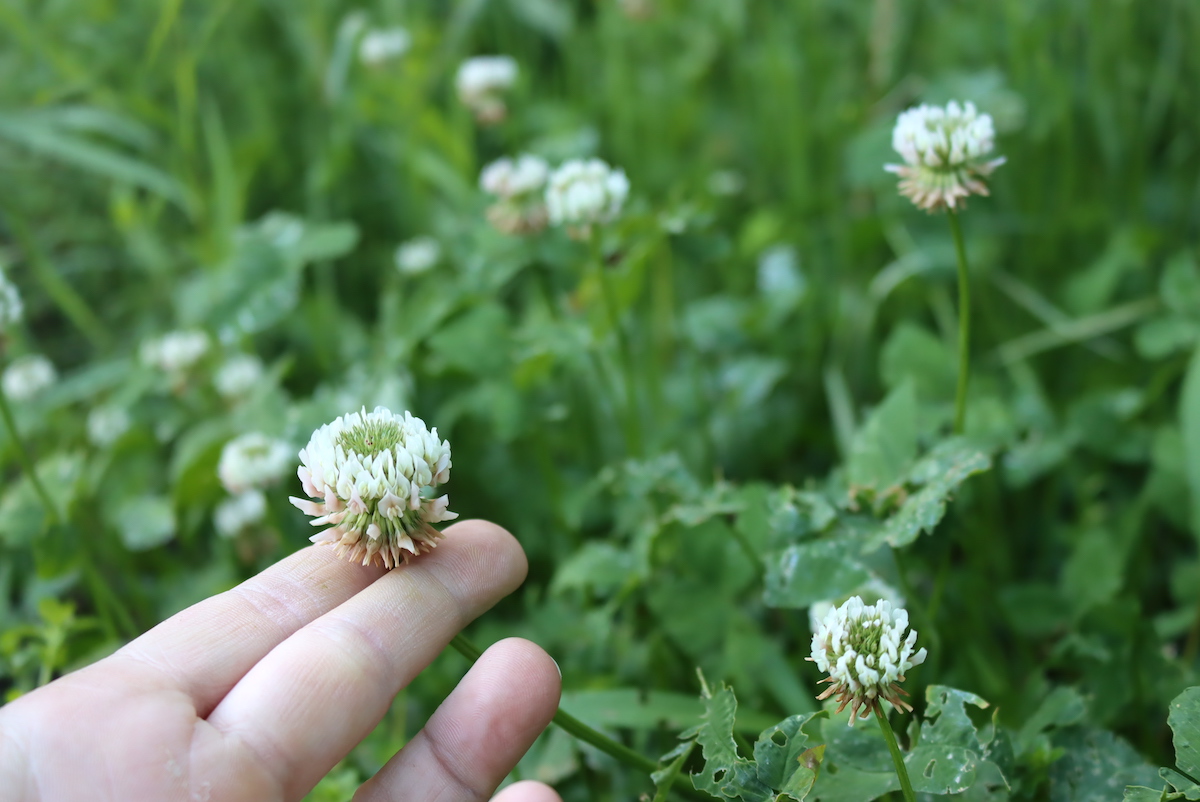
White Clover Leaves
White Clover features trifoliate leaves, each composed of three leaflets, that form on long stalks or petioles. The leaves are generally ¾ to 1 inch long. Rarely, you may find a lucky White Clover leaf with four leaflets.
The leaflets are green, hairless, obovate or obcordate, and more rounded than other clover species. The edges are finely serrate. Each leaflet may or may not have a pale green or whitish watermark, chevron, or crescent shape near its center.
White Clover Stems
White Clover has main stems that act as stolons, creeping along the ground and rooting at the nodes. They generally grow to about 7 inches in length. From this main stem, the leaf petioles grow upward and may be up to 8 inches tall. From the leaf axils, the peduncles or flower stalks grow upward and may reach 8 to 10 inches in height.
All the stems are typically light green, solid, and hairless. The flower and leaf stems are unbranched.
White Clover Flowers
White Clover has round white flowerheads that may have a pinkish hue, particularly as they age. Eventually, they start to dry and become brownish.
The flowers are typically ½ to ¾ inches wide and are borne on long stems from the leaf axils. Each flower head is composed of 40 to 100 florets that each have five petals.
White Clover Seeds
White Clover has small yellowish or reddish heart-shaped seeds that may darken to brown with age.
White Clover Look-Alikes
White Clover is sometimes confused with the related Alsike Clover (Trifolium hybridum). However, the two differ in the following ways:
- Alsike Clover may reach 2 feet tall.
- Alsike Clover has semi-erect, sparsely branched stems that are hairy in their upper portions.
- Alsike Clover leaflets are oblong or obovate and lack any white chevrons, crescents, or watermarks.
- Alsike Clover flowers are whitish pink.
Another look-alike is Black Medic (Medicago lupulina). Fortunately, it too differs in a few easy-to-spot ways:
- Black Medic has hairy stems and leaves.
- Black Medic has yellow flowers.
- Black Medic leaflets lack any white chevrons, crescents, or watermarks.
Lastly, White Clover can be mistaken for another relative, Red Clover (Trifolium pratense). Red Clover differs from White Clover in the following ways:
- Red Clover may reach 31 inches tall.
- Red Clover stems are hollow and have some fine hairs.
- Red Clover leaflets are hairy, oval to ovate, and broader in the center.
- Red Clover has rosy pink flowers.
Ways to Use White Clover
It’s easy to overlook White Clover in favor of its more colorful relative, the Red Clover. However, White Clover also has many wonderful medicinal and culinary uses. One of the easiest ways to use White Clover is to cut a few blooms and leaves and toss them into a salad with other greens.
You can cook with White Clover too! The flowers also make cute additions to cakes and other baked goods. While the seeds are small, you can grind them into tasty flour if you can harvest a lot. The foliage is a protein-rich green, and you can use the leaves and stems as a potherb in soups, stews, and stir-fries.
Herbalists often reach for the blossoms when making medicinal preparations, but you can use the leaves too. White Clover makes a tasty and nurturing tea that helps boost the immune system and conquer mild illnesses like colds and flu. White Clover blossoms and leaves can also be dried or preserved as tinctures or glycerites for winter use.
White Clover may also have soothing effects externally. You can incorporate White Clover into your salves, balms, lotions, and infused oils for treating irritations, burns, scrapes, and other mild injuries. The leaves and blossoms are also perfect for tossing into hot baths.
White Clover Recipes
- Need a cool, refreshing, and healthy drink? Try this White Clover Iced Tea from Grow Forage Cook Ferment.
- Turn your White Clover blossoms into a sweet treat with this recipe for Strawberry White Clover Cookies from Homespun Seasonal Living. This one is an excellent way to get the kids excited about foraging!
- If you’ve been feeling down or under the weather, make this simple White Clover Pudding for comfort and healing from Gather Victoria.
- If you have a plethora of clover blossoms on hand, consider putting some up for later. Learn to can Sweet Clover Blossom Jelly with this recipe from Texas Homesteader.
- Alternatively, you can use a bunch of the flowers to make flour! Learn to make White Clover Flower Flour and St. Patrick’s Clover and White Chocolate Cookies with these instructions from Southern Forager.
- Create your own immune-boosting White Clover tincture with this quick video from Tiny Dreamer.
